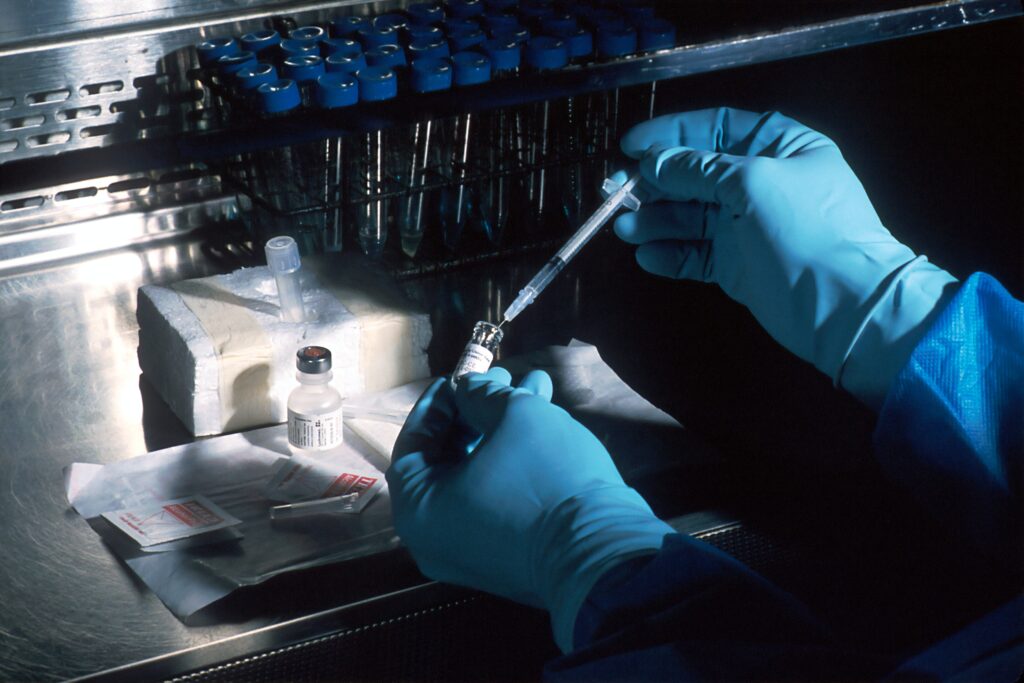
What are ASOs and why are we hearing more about them?
by Kate Still, PhD
Antisense oligonucleotides (ASOs) are a therapeutic strategy with the potential to address the underlying genetic cause of Phelan-McDermid syndrome. To understand how ASOs work, it’s important to know a fundamental principle of biology.
DNA is the blueprint for RNA, and RNA makes protein. DNA contains the many genes that make us who we are. RNA helps turn the DNA blueprint into proteins. Proteins are the action-oriented molecules that carry out functions in our cells.
How does this apply? Phelan-McDermid syndrome is a genetic disease, which means it is caused by an alteration to DNA. If the DNA blueprint is disrupted, RNA can be disrupted, and proteins can be disrupted. Most people with Phelan-McDermid syndrome have altered DNA of the SHANK3 gene. This means there won’t be as much functional SHANK3 RNA and SHANK3 protein. SHANK3 protein is important for brain development and nerve cell communication and function.
Drugs designed to treat Phelan-McDermid syndrome can intervene at any of these three stages and beyond. They can attempt to address the DNA with techniques such as gene therapy or gene editing. They can also target the later stages of dysfunction by delivering proteins needed for brain cells to function better.
Antisense oligonucleotides, or (ASOs) for short, are designed to target the intermediate step – RNA.
ASOs are synthetic structures that can bind RNA and modify it. “Antisense” refers to the complimentary sequence. “Oligonucleotide” is a short stretch of building blocks of genetic material. ASOs can modify the processing of RNA, or reduce, or increase, the amount of protein made from it. These ASOs can be tailored to specific genes/RNA of interest in a given disorder. In the case of Phelan-McDermid syndrome, SHANK3 RNA is being targeted.
Why have we been hearing about them recently?
ASOs are being developed that could be used to treat Phelan-McDermid syndrome in the future. One announcement from a pharmaceutical company called PYC Therapeutics stated they have added an ASO for Phelan-McDermid syndrome to their pipeline (press release link). PMSF is in conversations with PYC Therapeutics to help them get all the supports they need for investment in Phelan-McDermid syndrome drug development.
Separately, researchers in Germany with expertise in SHANK3/autism research just released a publication identifying two ASOs with relevance to Phelan-McDermid syndrome (publication link). This team includes a recent member of the PMSF Scientific Advisory Committee.
Both approaches have found a way to increase SHANK3 protein by modifying SHANK3 RNA with ASOs. The hope is that by increasing the amount of functional SHANK3 protein, this can start to correct some of the issues underlying Phelan-McDermid syndrome.
What is the path forward?
Are there any challenges? With any therapeutic there are challenges to implementation. Therapeutics targeting RNA or DNA can usually only target a small amount of material, such as one gene. This approach does not target any genes/RNA besides SHANK3 lost in a deletion. This type of approach also does not impact people with Phelan-McDermid syndrome who do not have altered SHANK3.
Delivery of the therapeutic is a challenge because it needs to get to the tissue most affected, such as the brain. This can require troubleshooting with packaging the drug, dosage, and can require a localized injection.
With all therapeutics, it is unknown at what age they will be most effective until extensively tested.
So why are these therapeutics promising? They are thought of as “disease-modifying” – meaning they aim to address the underlying cause of the genetic disorder. They are targeting the DNA –> RNA –> protein pathway in a way that is specific to Phelan-McDermid syndrome. This does not mean that therapies which don’t target DNA or RNA itself won’t be successful. At PMSF, we are invested in every avenue of drug development equally to have as many approaches as possible to find successful therapeutics.
How long will this process take? It’s important to remember that development of any therapeutic can take years. Many of the experimental drugs for Phelan-McDermid syndrome including ASOs are currently in the “pre-clinical” phase. In this phase, a therapeutic has been developed and is being tested in models of the disorder. Examples are cell or animal models.
